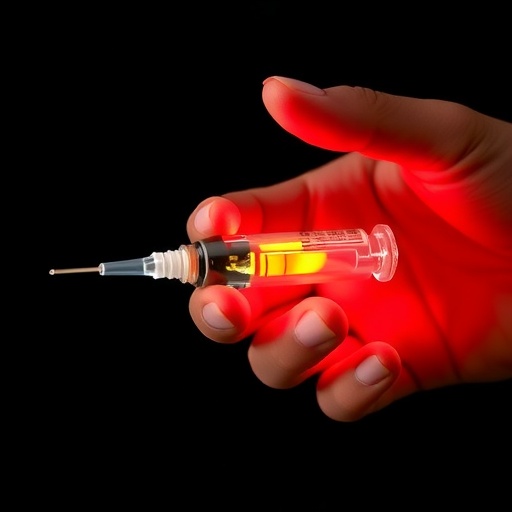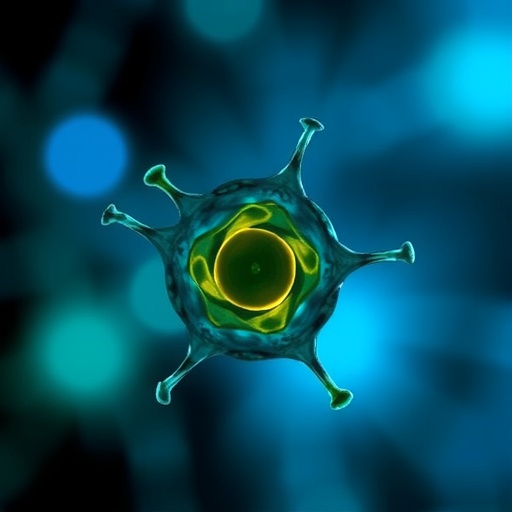In the realm of contemporary medicine, the exploration of traditional therapies dovetails with rigorous scientific inquiry, exemplified by a recent study on Guhong Injection, a traditional Chinese medicinal formulation. Conducted across various medical centers in China, this ambitious research sought to evaluate the safety profile of Guhong Injection post-marketing, underscoring the importance of real-world evidence in holistic therapeutic modalities. This evaluation is particularly critical given the rising interest in integrating traditional remedies within mainstream therapies, where efficacy and safety remain paramount concerns.
The venture into the safety evaluation of Guhong Injection involved an extensive multicenter approach, reflecting comprehensive data collection and meticulous oversight. This strategy was designed to gather a diverse sample size, amounting to an impressive 30,000 cases, which facilitates a thorough examination of the injection’s safety across various demographics and clinical settings. By deploying a prospective cohort design, researchers ensured that the data collected were both current and relevant, providing an accurate reflection of the product’s performance outside of controlled trial settings, where conditions often do not mimic the complexities of everyday medical practice.
Integral to the study was the rigorous methodology employed for patient selection and evaluation. Participants were selected based on predefined inclusion criteria, ensuring a representative cohort that mirrors the general population of patients receiving Guhong Injection. Tracking adverse reactions and therapeutic outcomes in real time, the research team utilized a variety of data collection tools, including patient interviews, medical records, and follow-up surveys. This multifaceted approach not only heightened the reliability of the findings but also provided participants with opportunities to report their experiences candidly.
Safety was the linchpin of this study, with researchers keenly focused on identifying any potential adverse effects stemming from Guhong Injection. The evaluation encompassed a broad spectrum of side effects, ranging from mild, self-limiting symptoms to more severe reactions requiring medical intervention. By establishing a clear reporting framework, the study fostered transparency and enabled the identification of safety signals that might otherwise go undetected in less comprehensive evaluations.
Beyond just safety, the researchers were invested in understanding the therapeutic efficacy of Guhong Injection. By utilizing patient-reported outcomes alongside clinical assessments, the study painted a detailed picture of how well the injection performed in managing specific conditions. The results indicate that Guhong Injection may provide substantial benefits in symptom relief for patients with certain ailments, supporting its continued use as part of integrative treatment plans.
The implications of this research extend far beyond the immediate findings. The extensive data gathered and the methodologies applied set a valuable precedent for future studies on traditional remedies within Western medical frameworks. By documenting the safety and efficacy of Guhong Injection through a robust, real-world lens, the researchers have contributed not only to the existing literature but also to the larger discourse surrounding the integration of complementary and alternative medicines into standardized care practices.
Furthermore, the findings emphasize the importance of patient engagement in the evaluation of traditional medicine. By empowering individuals to share their experiences, the study has highlighted the subjective dimension of treatment, which is often overlooked in purely quantitative research. This lends credence to the notion that holistic approaches must consider both clinical data and personal narratives, creating a more nuanced understanding of patient-centered care.
Global interest in traditional medicines continues to grow as healthcare systems seek to provide comprehensive treatment options for patients. Research initiatives like the study on Guhong Injection force the medical community to be proactive in assessing these therapies’ validity and safety. The current climate of healthcare necessitates such investigations, as they play a crucial role in establishing trust and credibility for alternative treatments among skeptics.
In terms of regulatory implications, the findings from this study could have a significant impact on how traditional medicines are viewed and administered globally. Regulatory bodies may take cues from this extensive research to create frameworks for the approval and monitoring of similar traditional therapies. These measures would ideally balance the need for consumer protection with the desire to make validated, beneficial treatments readily available.
As complementary and alternative medicine garners increasing acceptance, understanding the contextual use, benefits, and challenges associated with treatments like Guhong Injection becomes imperative. The research underscores the urgency of bridging the gap between traditional practices and evidence-based medicine. By doing so, the healthcare community can improve patient outcomes while ensuring safety and efficacy across treatment modalities.
Analyzing the socio-cultural context in which traditional remedies are utilized can further augment the insights gleaned from this study. Guhong Injection, like many traditional Chinese medicinal therapies, is deeply rooted in a rich cultural tradition. Exploring the intertwining of culture and medicine unveils layers of meaning that influence patient perceptions and treatment choices, ultimately enriching the overall dialogue around therapeutic interventions.
Furthermore, the research team’s dedication to methodological rigor demonstrates a commitment to scientific excellence that could inspire future inquiries in this arena. By employing an evidence-based approach, they illuminate the path toward a more comprehensive understanding of traditional treatments, affirming their potential role in modern healthcare.
As this research on Guhong Injection begins to circulate within both academic and public domains, it is poised to spark further investigations and discussions. Questions about the integration of traditional therapies into broader healthcare systems will likely surface, prompting critical discourse on the best ways to achieve this synthesis without compromising patient safety.
In conclusion, the multicenter, prospective study of Guhong Injection serves as a bellwether for the thoughtful examination of traditional medicines within the modern healthcare landscape. As researchers continue to unveil the complexities surrounding these therapies, it is hoped that their findings will lay the groundwork for future clinical practices that honor both science and tradition in equal measure.
Strong partnerships between conventional and complementary medicine practitioners, accountability in reporting outcomes, and the rigorous evaluation of treatments like Guhong Injection cultivate an environment in which patients can receive the most holistic care possible.
The journey of Guhong Injection not only exemplifies the intersection of tradition and science but also highlights the ongoing evolution of patient care in an increasingly integrative healthcare world. As studies like this gain traction, they inspire the next generation of researchers to further explore the potential of traditional healing modalities in collaboration with contemporary medical practices.
Subject of Research: Safety evaluation and efficacy of Guhong Injection.
Article Title: Post-marketing safety evaluation of Guhong Injection: a multicenter, prospective real-world study of 30,000 cases in China.
Article References:
Deng, J., Lei, T., Wang, X. et al. Post-marketing safety evaluation of Guhong Injection: a multicenter, prospective real-world study of 30,000 cases in China.
BMC Complement Med Ther 25, 355 (2025). https://doi.org/10.1186/s12906-025-05112-5
Image Credits: AI Generated
DOI: 10.1186/s12906-025-05112-5
Keywords: Guhong Injection, traditional medicine, safety evaluation, multicenter study, real-world evidence.
Tags: comprehensive data collection in health studiesefficacy and safety of herbal remediesevaluation of injection safety across demographicsGuhong Injection safety studyholistic therapeutic modalitiesintegrating traditional therapies with modern medicinemulticenter clinical trial in Chinapatient selection criteria in medical researchpost-marketing safety evaluationprospective cohort design methodologyreal-world evidence in traditional medicinetraditional Chinese medicinal formulation





